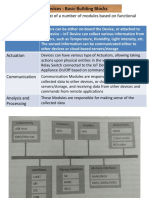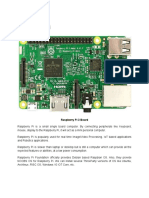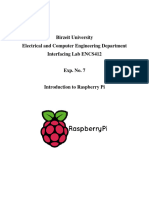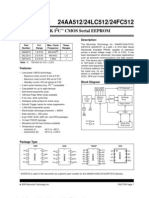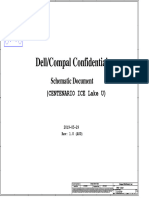0% found this document useful (0 votes)
38 views7 pagesUnit4-Open Platform
The document provides an overview of the Raspberry Pi, a credit card-sized single-board computer with an ARM processor and various interfaces for connecting peripherals. It details its architecture, programming options using Scratch and Python, and GPIO pin functionalities for controlling electronic components. Additionally, it explains communication protocols such as Serial, SPI, and I2C for data transfer and includes examples of programming and using GPIO pins to interact with hardware.
Uploaded by
kumari2004rameshCopyright
© © All Rights Reserved
We take content rights seriously. If you suspect this is your content, claim it here.
Available Formats
Download as PDF, TXT or read online on Scribd
0% found this document useful (0 votes)
38 views7 pagesUnit4-Open Platform
The document provides an overview of the Raspberry Pi, a credit card-sized single-board computer with an ARM processor and various interfaces for connecting peripherals. It details its architecture, programming options using Scratch and Python, and GPIO pin functionalities for controlling electronic components. Additionally, it explains communication protocols such as Serial, SPI, and I2C for data transfer and includes examples of programming and using GPIO pins to interact with hardware.
Uploaded by
kumari2004rameshCopyright
© © All Rights Reserved
We take content rights seriously. If you suspect this is your content, claim it here.
Available Formats
Download as PDF, TXT or read online on Scribd
/ 7























